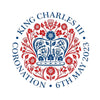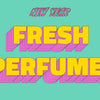The Difference Between Perfume, Eau de Parfum, Cologne, Eau De Toilette, And More

The difference between perfume and cologne depends on the greater or lesser concentration of oils contained in the perfume. The main difference between these two most common forms of perfumery is the ratio of essential oil to alcohol concentration. The main differences between perfume and toiletries lie in the concentration of the perfume and the type of oil used in these blends. Perfume can be divided into several categories depending on their perfume concentration.
In the world of fragrances, a distinction is made between niche perfumes and luxury perfumes based on the ratio of concentrations of water, alcohol and perfume oils. Simply put, a high concentration of flavors means a higher percentage of essential aromatic oils and less alcohol. The concentration of the fragrance affects not only the intensity, but also the duration. In general, the higher the concentration of perfume, the longer it will last, the less often you will have to use (spray) it, and it should spread better.
Although Eau de Parfum contains a higher concentration of alcohol, it is actually better for sensitive skin than other types of fragrances. Fragrances have the highest concentration of essential oils, usually 20% to 30% (sometimes higher), making them the most expensive type of fragrance. A higher concentration of perfume oil means eau de parfum costs more, but you have to apply less than eau de toilette. The most expensive ingredient in any fragrance, whether it's Eau de Parfum, Eau de Toilette, or any other concentration, is scented oil.
However, the most obvious difference between perfume, eau de parfum, eau de toilette and cologne is the concentration of oil used in the perfume. Eau de Parfum is usually a more expensive fragrance than Eau de Toilette or Cologne because the fragrance is more concentrated. Eau de Toilette, Eau de Parfum, and Fragrance Extracts come in different concentration levels, and the response of each fragrance will vary from skin to skin (see Choosing a Fragrance Based on Your Skin Type). Eau De Parfum transforms into scented water and contains more concentrated aromatic oils that define the fragrance.
It can be around 20-40% fragrance oil which means it will leave a stronger fragrance (so less EDT is better). Eau de Parfum with a higher concentration of fragrance creates a longer lasting and more fragrant scent, while Eau de Toilette is more like a body splash that can be applied more freely than perfume. A rich, full-bodied Eau de Parfum pairs well with evening events and colder climates, as the fragrance dissipates faster in dry air, so you'll need a higher concentration of fragrance to achieve the same result. Specific compositions vary by brand, but it's safe to think of an eau de toilette as lighter and fresher, due to the higher concentration.
For example, a drop of lavender eau de parfum releases a higher concentration of fragrance than eau de toilette, and as the level of scented oil increases, “some notes may show up on the skin, becoming richer, sharper, or sweeter.” "depending on the chemical makeup of the perfume," explains Eduardo Valades. Perfumer Samantha Taylor of The Powder Room says the main difference between eau de toilette and perfume and eau de toilette is the concentration of perfume in each perfume. The main difference between EDP and EDT is in the concentration of perfume oil present, which plays a huge role in the lifespan of a fragrance.
EDP fragrances typically contain heavier molecular or perfume notes that are more intense and bolder on the nose, improving longevity and longevity. Cologne, also known as Eau de Cologne or Eau Fraiche, contains 25% perfume oil. 1 Eau de Toilette contains 5 to 10% perfume oils. Cologne (EDC) has a much lower fragrance concentration than high-alcohol EDT (about 2% to 4%) and is therefore less expensive than the aforementioned fragrances.
The fact that there is a lower concentration of essential oils, which are expensive, means that the cologne can be sold at a reasonable price. In addition, as perfume extracts become rarer, consumers are increasingly turning to more attractively priced perfumes or eau de toilette. Of course, this variation in longevity isn't the only way to tell a perfume from an eau de toilette; Perfume and toilet water also differ in price, place of sale and even the size of the bottle.
Although the concentration of perfume oil in a diluted Eau de Parfum (EdP) is always higher than the concentration of the same perfume in an Eau de Toilette (EdT) within the same range, the actual amounts may vary from perfume house to perfume house. The perfume industry has a table that lists different types of perfumes based on the amount of concentrated essential oils used to make a cologne or eau de toilette. Eau de Parfum typically contains 15 to 20 percent perfume oil.
Each fragrance has a different sillage (how close to the body and how far away from the body the scent is), so a fragrance with a low sillage may not smell as strong and thus dissipate faster, even if it is a perfume. while other scented eau de parfum can smell all day long, even if it has a lower concentration of oils. If both types of fragrances are made with the same notes, then yes, they will smell the same, but not exactly the same.
- Posted in Eau de Parfum, Fragrance, The Difference Between Perfume


















